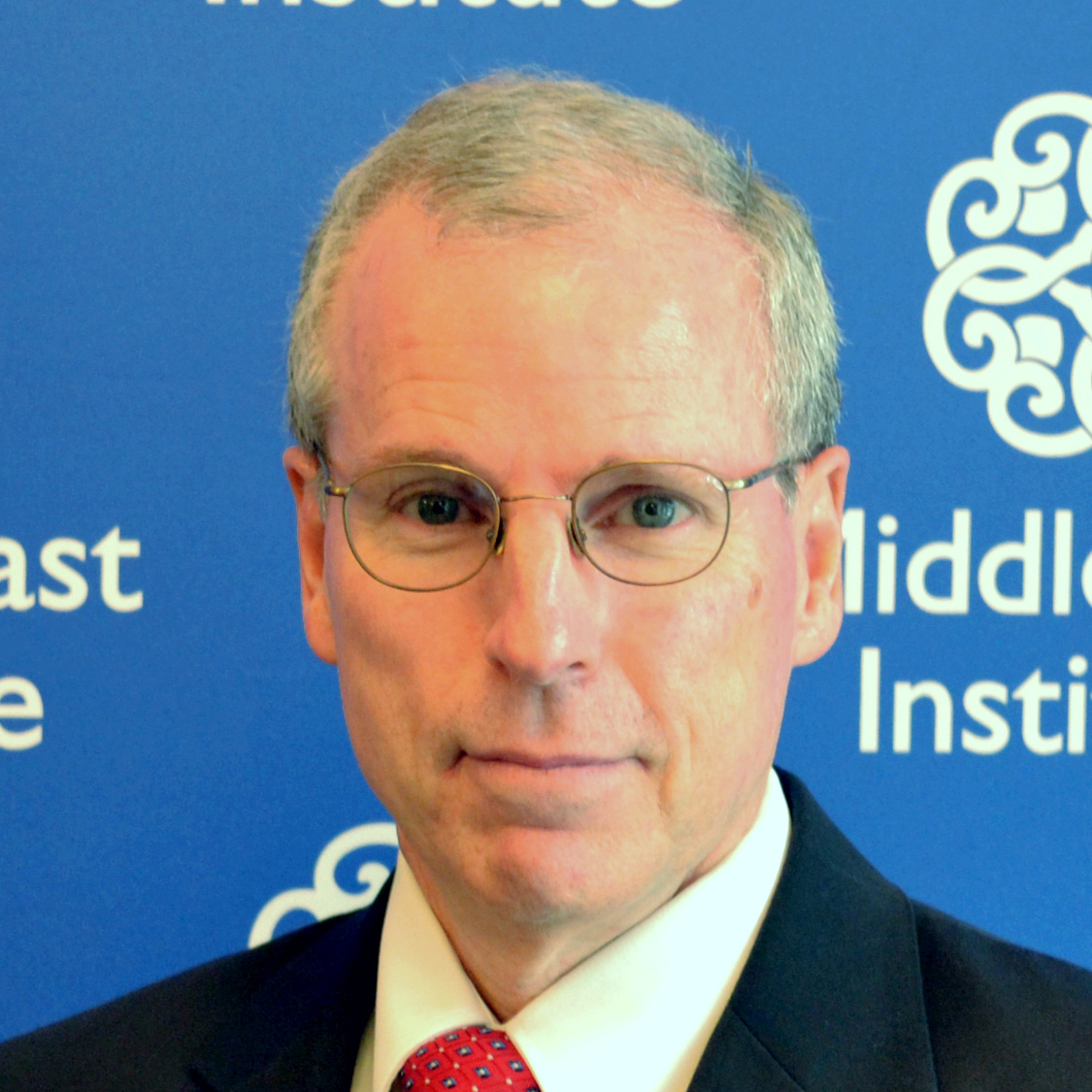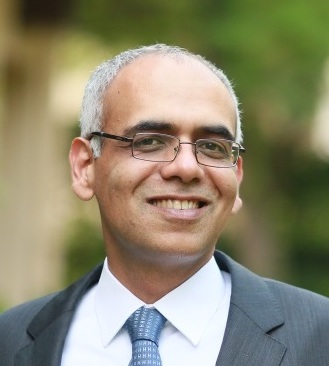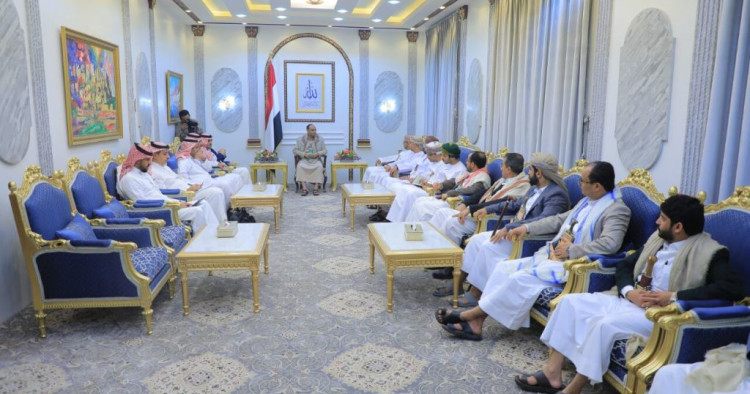Contents:
- Saudi-Houthi talks kick off in Sana’a as Riyadh seeks an end to the war in Yemen
- Coordinated rocket strikes from Gaza and Lebanon show strengthening of Iran’s Axis of Resistance
- White House report to Congress on Afghanistan becomes a political football
- China emerges as a major strategic player in Middle Eastern geopolitics
- Is Tunisia’s president leading the economy to a crash?
- The clash of Pakistani institutions at the heart of the current political crisis
Saudi-Houthi talks kick off in Sana’a as Riyadh seeks an end to the war in Yemen
Charles Schmitz
Non-Resident Scholar

-
Saudi and Omani negotiators are working out the details of a broad deal to end the war in Yemen that will reportedly be made up of stages, starting with a renewal of the cease-fire and a prisoner exchange and eventually leading to the withdrawal of foreign forces and talks about the nature of the future state.
-
It is clear is that the Saudis want very much to settle the war in Yemen and that the Houthis have the upper hand in the negotiations; an important early indication of the latter’s seriousness will be a prisoner exchange planned for next week.
Saudi and Omani negotiators arrived in Sana’a on Saturday, April 8, to work out details of a broad deal to end the war in Yemen, to be announced before Eid al-Fitr on April 20. The deal is reportedly made up of stages, with an initial renewal of the cease-fire, exchange of all prisoners, further opening of Sana’a airport and unrestricted shipping access to Hodeida Port, the lifting of the blockade of Taiz by the Houthis (formally known as Ansar Allah), the reunification of the Central Bank, and the payment of public sector salaries. A further stage includes the withdrawal of foreign forces from Yemen, negotiations about the nature of the future state, and finally the complete settlement within a unified state. Saudi officials met with top Yemeni officials last week to apprise them of the negotiations, as Yemen’s government is not a direct party to the talks. The head of the Presidential Leadership Council, Rashad al-Alimi, commented that the Yemeni government was forced to make difficult concessions and that it was concerned about guarantees of the Houthis’ compliance with any agreement.
Al-Alimi’s concern about the Houthis’ perfidy is well grounded. They have rarely complied with agreements signed over the last decade, instead using them to consolidate gains and launch new aggression. It is worth recalling that last year’s cease-fire followed the failure of the Houthi war machine to take the strategic city of Marib and the quick rolling back of their forces in Bayhan by United Arab Emirates-led troops just before they agreed to a cease-fire. In that truce, the Houthis also agreed to lift their blockade of Taiz but never did, despite the coalition’s fulfillment of its promises. And despite the ostensible cessation of hostilities, the Houthis managed to continue the war through other, largely economic, means. The Houthis’ drone attacks on oil tankers in Hadramawt and Shabwa prevented the government of Yemen from exporting oil. The Houthis’ blockade of commercial imports overland from Aden into territory under their control forced merchants to abandon the Port of Aden and instead use Hodeida Port, which is subject to the Houthis’ high taxes and fees. Now the Houthis appears to have been granted two key concessions, the unification of the Central Bank and the use of the oil revenues to pay public sector salaries, in effect turning the oil revenues over to them, though this part of the deal will be difficult to implement. What the Houthis couldn’t gain through war, they gained through blackmail.
The news about a final settlement in Yemen follows the Saudi-Iranian agreement to reestablish ties — and not for the first time. What role the agreement has in Yemen affairs isn’t clear — the agreement is secret — but what is certain is that the Saudis want very much to settle the war in Yemen and that the Houthis have the upper hand in the negotiations. However, the arrival of a Saudi tanker in Aden on Saturday with fuel for the city’s failing electrical generation plant points to the continuing economic burden Yemen will be for the Saudis.
An important early indication of the seriousness of negotiations will be a prisoner exchange the Red Cross has been preparing for next week. If the Houthis release the high-value prisoners, including former Defense Minister Mahmoud al-Subayhi and Nasser Mansour Hadi, brother of the former president, there might be something new in these negotiations. The Houthis have many times said they were willing to release these prisoners but never complied. Perhaps they have now consolidated enough gains that they feel they can steer the course of Yemen’s future and will genuinely negotiate this time.
Follow on Twitter: @cpschmitz
Coordinated rocket strikes from Gaza and Lebanon show strengthening of Iran’s Axis of Resistance
Randa Slim
Senior Fellow and Director of Conflict Resolution and Track II Dialogues Program

-
For the near-to-medium term, domestic challenges in both Lebanon and Israel will serve as deterrents to a large escalation along their shared border.
-
Yet the fact that last week’s rocket strikes against Israel were launched from multiple fronts indicates an increasing level of coordination within the Iran-led and -financed “Axis of Resistance.”
Last Thursday, April 6, multiple rockets were launched from southern Lebanon toward Israel, for which no one claimed responsibility. That same day, a barrage of rockets was also fired from the Gaza Strip. These attacks came after Israeli police raided the al-Aqsa Mosque in Jerusalem’s Old City on Wednesday, beating Palestinian worshippers, wounding dozens, and arresting hundreds.
Israel blamed Hamas for the attacks from both Lebanon and the Gaza Strip. In response to the rocket fire, the Israeli military struck Hamas “infrastructure targets” in southern Lebanon and munition factories and tunnels in the Gaza Strip. Later in the week, several rockets were also launched from Syria toward the Golan Heights. Israel responded by striking the rocket launchers in Syria.
Lebanon’s Prime Minister Najib Mikati condemned the Thursday rocket bombardment, rejecting the use of Lebanese territory to carry out attacks that destabilize the situation along the Lebanon-Israel front. Later in the week, he blamed the attack on “not organized parties, but rather non-Lebanese elements,” arguing that the rocket fire was a reaction to the “Israeli aggression on the Palestinian territories and the Gaza Strip.” It is hard to imagine that more than 30 rockets could have been launched from a territory essentially controlled by Hezbollah without Hezbollah senior officials knowing a priori of the attack and, if not approving, at least turning a blind eye to it.
The escalation on the Lebanese-Israeli front happened as Hamas’ political bureau chair, Ismail Haniyeh, was visiting Beirut, where he met with Hezbollah’s Secretary-General Hassan Nasrallah. Press reports citing informed sources claimed that Haniyeh’s visit to Beirut was part of an ongoing effort to revive the Lebanon-based joint operations room, formed in May 2021, between Iran’s Islamic Revolutionary Guard Corps (IRGC), Hezbollah, Hamas, and Islamic Jihad.
Hezbollah and Israel exchanged indirect messages via the United Nations Interim Forces in Lebanon (UNIFIL) that neither side wanted a war. Israeli military officials notably did not blame Hezbollah for the attack and the Israeli military was careful to avoid casualties in its strike on southern Lebanon. The reporting in the Israeli press that military officials were careful not to involve Hezbollah in this latest exchange of fire was not lost on the Lebanese — especially Hezbollah constituents, for whom this confirmed that the organization’s weapons stockpiles protect them against Israeli aggression.
For the near-to-medium term, domestic challenges in both Lebanon and Israel will serve as deterrents to a large escalation along their shared border. Hezbollah cannot afford to drag Lebanon into a war while it suffers from a devastating economic crisis. Whereas, in the midst of the most severe governing crisis since the founding of the state of Israel, the Israeli government cannot afford to engage in a war while hundreds of Hezbollah’s precision-guided missiles target Israeli cities and critical infrastructure. The attack launched from Lebanon was, thus, limited, as was the Israeli response.
Yet the fact that last week’s rocket strikes were launched from multiple fronts indicates an increasing level of coordination within the Iran-led and -financed “Axis of Resistance.” The rift that had opened over a decade ago between Hezbollah and Hamas because of the latter’s opposition to Bashar al-Assad at the start of the citizen uprising in Syria has clearly been papered over.
The unprecedented attack from Lebanon — the first of its kind since 2006 — also indicates that Hezbollah is increasingly pivoting away from its engagements in regional conflicts in Syria and Yemen now that both of these conflicts are moving toward some form of denouement. Rather, the militant group is returning to its original brand: of carrying out resistance against Israel. And more and more, it seeks to play a leading and coordinating role in the regional axis of forces arrayed in opposition to Israel and the United States.
Follow on Twitter: @rmslim
White House report to Congress on Afghanistan becomes a political football
Marvin G. Weinbaum
Director, Afghanistan and Pakistan Studies

-
The U.S. intelligence community mistakenly expected the Ashraf Ghani government to hold on well into the fall, which would have allowed for a more orderly withdrawal of personnel and equipment, the processing of more asylum applications, and a last-ditch effort to reach an Afghan power-sharing agreement with the Taliban.
-
The Biden administration’s interest in minimizing its errors in the withdrawal from Afghanistan and the political opportunism of the Republicans in painting the exit a major policy disgrace makes a full and honest assessment difficult.
Facing a barrage of criticism from Republican lawmakers and a House committee investigation on the handling of the United States’ withdrawal from Afghanistan, the Biden administration released on April 6 a summary of a classified report to Congress explaining and defending its actions. While the administration’s statement admits to mistakes, it lays much of the blame on the narrow options created for President Joe Biden by the Trump administration’s earlier decision to sign on to the February 2020 Doha agreement, which specified a concrete date for a total U.S. withdrawal. The previous administration is also faulted for failing to share its withdrawal plans. That said, according to National Security Council spokesperson John Kirby, the report to Congress is not meant to fix accountability but is about providing a better understanding of events.
The single greatest admission in the report is the failure to have started earlier the evacuations of American citizens and those Afghans who had contributed to the U.S. military mission. By January 2021, U.S. military forces had already been drawn down to just 2,500, the lowest level since the first few years following the U.S. intervention. As described in the report, there was fear that any more hurried evacuations of Americans could undermine confidence in the Kabul government and demoralize Afghan defense forces. There had remained a widespread belief among Afghans that the U.S., despite the American commitment to the Taliban, had so great an investment in Afghanistan that it could not possibly walk out on the country. This thinking abruptly changed, however, when, on April 14, 2021, President Biden announced May 1 as the date for beginning the final American troop departures from Afghanistan; their completion, together with the removal of U.S. air support, would be by the memorable date of Sept. 11. With the president’s decision, widespread desertions by members of the Afghan army and police gathered steam during June and July, as did the striking of local surrender deals with Taliban commanders.
Along with many others, the White House underestimated the rapidity with which the Afghan military was unraveling. It resulted in the U.S. operating from a faulty intelligence assessment that the Ashraf Ghani government was likely to hold on well into the fall. This was expected to allow for a reasonably orderly withdrawal of the remaining American personnel and the removal of billions of dollars’ worth of military hardware. It would also leave enough time, it was thought, to process many more of those Afghans qualifying for special asylum visas to the U.S. There would additionally be an opportunity for a last-ditch effort for Afghans to reach an agreement with the Taliban on the formation of a power-sharing interim government.
The Biden administration’s interest, in its report to Congress, in minimizing its errors in the withdrawal from Afghanistan, and the political opportunism of the Republicans in painting the exit a major policy disgrace makes an honest assessment difficult. Whenever the U.S. chose to leave, its final departure was bound to traumatize vast numbers of Afghans and create panic. The Islamic State – Khorasan Province (ISKP) suicide attack outside the Kabul airport that killed 13 marines and an estimated 170 Afghan citizens probably could not have been prevented. For all the chaos in August 2021, the U.S. did, nevertheless, manage to evacuate 120,000 Afghans. If, as the report to Congress asserts, we have learned lessons from Afghanistan and are applying them elsewhere, we should do our best to guard against them also becoming politicized.
Follow on Twitter: @mgweinbaum
China emerges as a major strategic player in Middle Eastern geopolitics
John Calabrese
Contributor

-
Beijing’s diplomatic initiative signifies a willingness to assume a degree of responsibility for stability in the region and the risks associated with it that China had previously seemed strongly inclined to avoid.
-
China’s diplomatic foray into the region should also be viewed against the backdrop of its foreign policy reset and its push to build a post-American international security architecture.
The images of Saudi Foreign Minister Prince Faisal bin Farhan and his Iranian counterpart, Hossein Amir-Abdollahian, flanking China’s Foreign Minister Qin Gang — all three smiling and clasping hands — are an indication of the easing of tensions between the two bitter Gulf rivals as well as of Beijing’s growing influence and ambitions in the Middle East and on the global stage.
For more than seven years, diplomatic and military hostility between Riyadh and Tehran has fueled instability and conflict across the region. However, meeting last Thursday, April 6, in Beijing, Saudi Arabia’s and Iran’s top diplomats confirmed the reopening of their embassies and consulates, as well as the resumption of direct flights and facilitation of visas for citizens. The meeting followed the agreement signed by the two sides on March 10, also in Beijing, to resume diplomatic relations — a deal brokered by China that built upon more than two years of exploratory talks by Iraq and Oman.
Saudi Arabia and Iran each has its reasons for seeking a de-escalation of tensions. Normalizing relations with Iran could help Saudi Arabia extricate itself from Yemen, thereby enabling Riyadh to refocus attention and resources on the overriding domestic priorities of diversifying the economy away from oil and creating jobs for its burgeoning youth population. For Iran, which faces a daunting array of challenges, reestablishing diplomatic ties with Saudi Arabia could serve as a vehicle for reducing its political isolation and advancing its aim of fostering economic relations with neighboring countries and non-Western powers. Add to these possible motives the realization by Saudi Arabia and Iran of their mutual military vulnerability, each side equipped with the means to inflict substantial damage on the other’s critical infrastructure.
Setting aside the issue of the Saudi and Iranian motives for seeking a rapprochement now, what of China’s role as deal broker and guarantor? In fact, much of the analysis over the past month has focused on China’s increasing role in the Middle East amid global power competition — and understandably so. Beijing’s diplomatic initiative signifies a willingness to assume a degree of responsibility for regional stability and the risks associated with it that China had previously seemed strongly inclined to avoid. There can be little doubt that the opportunity to help reduce tension in a region from which China sources nearly half its oil imports was compelling, especially with energy security having risen to the top of Beijing’s policy agenda in the context of global market turmoil. But Beijing’s diplomatic foray into the region should also be viewed against the backdrop of China’s foreign policy reset.
Since Chinese leader Xi Jinping unveiled his Global Security Initiative (GSI) at the Boao Forum in April 2022, and especially in light of a consolidation of power that has made Xi China’s most dominant leader since Mao Zedong, Beijing has been waging a diplomatic offensive. Qin Gang, China’s new foreign minister, recently declared that Beijing has “pressed the acceleration button” and sounded the “clarion call” for diplomacy. While striking a more combative tone toward the United States, Chinese officials have been keen to repair and reinvigorate relations with Europe, as illustrated by top diplomat Wang Yi’s week-long tour of the continent in February. But it is the Global South that the Chinese leadership appears to regard as central to its aim of pushing back against U.S. and Western hegemony through establishing an alternative multilateral order and positioning itself as a peaceful global security provider. China’s GSI concept paper, issued in February, provides a broad outline for how China envisions a post-American international security architecture, and details how Beijing would help achieve stability, including in areas where geopolitical tension and conflict is endemic.
There are those who will regard Beijing’s flurry of diplomatic activity as merely performative — heavy on core concepts and principles but light on actionable plans. Similarly, in the case at hand, some will be tempted to view Beijing as simply having officiated at a ceremony where two willing parties enlisted its good offices to carry them across the finish line. The months ahead will provide opportunities to test the proposition that China is both willing and able to use its leverage to help ensure the parties follow through on their commitments. Yet one thing is clear: Not only has China established itself as the Middle East’s leading foreign economic partner but it has emerged as a major strategic player at the center of the region’s geopolitics.
Is Tunisia’s president leading the economy to a crash?
Robert S. Ford
Senior Fellow

-
On April 6, President Saied rejected subsidy cuts that are an essential element of the reform plan agreed with IMF staff last October in return for a four-year financial support package worth $1.9 billion.
-
Tunisia faces foreign debt service payments of $2 billion in 2023 and another $2.6 billion in 2024, and financial rating agencies warn that the country will likely default without external support.
President Kais Saied threw doubt on his government’s willingness to implement an economic reform plan vital to enabling Tunisia to finance imports and avoid the kind of debt default that devastated the Lebanese economy in 2020. On April 6, Saied rejected subsidy cuts, starting with fuel subsidy reductions, that are an essential element of the reform plan agreed with International Monetary Fund (IMF) staff last October. Saied warned such austerity measures threaten to impoverish Tunisians and jeopardize Tunisia’s stability.
Especially in the wake of the Ukraine war, Tunisia’s import costs for food and energy have risen. Foreign exchange reserves have dwindled, the Tunisian dinar lost value, and price inflation increased to about 10% annually while Tunisians also faced frequent shortages of essential food commodities. In response, the government agreed on a reform plan with the IMF last October that included subsidy reductions, limits on public-sector wages, and deep reforms to state enterprises, including the abolition of some of their monopolies, in return for a four-year IMF financial support package worth $1.9 billion. The IMF deal was meant to catalyze additional foreign financing of about $3 billion from the European Union as well as individual European and Gulf states. The IMF Executive Board was supposed to approve the Tunisian reform plan in late December but has hesitated; the Tunisian government did not keep its commitments in the 2014 and 2017 agreements with the IMF. Over the past month, senior officials from Europe and the United States have urged Tunis to take the initial reform steps necessary to convince the IMF Executive Board to approve the new financial package. Saied’s remarks are a step in the opposite direction.
Instead, the Tunisian president has warned that Tunisians may have to rely more on themselves. Tunisia faces foreign debt service payments of $2 billion in 2023 and another $2.6 billion in 2024, and financial rating agencies such as Moody’s and Fitch warn that the country likely would default; already Tunisian government bonds are dropping in value. A default would make it far harder than it already is for Tunisia to secure foreign loans to pay for imports. The Tunisian dinar would drop further and inflation would grow worse still. Moreover, the government likely would turn even more to Tunisian banks for loans for ongoing spending, putting the banks’ assets and solvency at risk as well. Some European states, especially Italy, worry that even more dire economic conditions will boost irregular migrant flows across the Mediterranean.
Follow on Twitter: @fordrs58
The clash of Pakistani institutions at the heart of the current political crisis
Syed Mohammad Ali
Non-Resident Scholar

-
Pakistan’s government, judiciary, and legislature are locked in a struggle over whether and when to hold early elections demanded by populist former Prime Minister Imran Khan.
-
If the tensions within and between core state institutions continue to grow, especially amidst the worsening security and economic situation, the military may feel reluctantly compelled to retake the reins of power.
Since its founding in 1947, Pakistan has had its share of institutional crises — owing in no small part to a chronically unstable political system, in which the Armed Forces hold powerful sway — but never have they been this pronounced.
The military, which ruled the country off and on for over three decades in total, presently retains and exerts significant influence over the broader political economy as well as over key state institutions. Several democratically elected governments in Pakistan assumed power with the blessing of the Armed Forces, and a number of prime ministers were just as swiftly overthrown for apparent transgressions against military interests. The growing prominence of Imran Khan on the political scene at the end of the 2010s was similarly credited to military support, earning his government, in power between 2018 and 2022, the label of “hybrid regime.” The judiciary also helped Khan’s rise by undermining his main political rivals, presumably at the behest of the military establishment. But while Khan won the 2018 general elections, his foreign policy overreach and hesitation to endorse the appointment of the next chief of the Pakistani Inter-Services Intelligence (ISI) resulted in him losing the backing of the top brass last year; his opponents in the legislature saw the opportunity and quickly overthrew him via a no-confidence motion.
The ouster, in April 2022, inadvertently generated broad support for Khan based on widespread perceptions, which he himself has encouraged, that his removal was part of an American-backed conspiracy enabled by corrupt Pakistani politicians. Khan immediately sought to cash in on this spike in his popularity and started demanding early general elections. Meanwhile, seniormost members of the military also became targets of disdain amongst Khan’s growing fanbase. When the flustering coalition of his political rivals kept ignoring the demand for snap elections, Khan decided to dissolve the provincial assemblies in Punjab and Khyber Pakhtunkhwa, where his party, the Pakistan Tehreek-e-Insaf (PTI), enjoyed a majority. In response, the president of Pakistan, Arif Alvi, whom Khan had appointed, made an ad hoc announcement indicating that new elections would be held within these two provinces at the end of April. But the Election Commission of Pakistan stepped in to assert that new provincial elections could not be held this early due to security concerns, apparently at the behest of the military. This past week, a three-member Supreme Court bench declared the Election Commission’s decision to delay the elections unconstitutional. Yet six apex court judges recused themselves from this hearing, prompting the national assembly to pass a resolution rejecting the Supreme Court ruling and introducing legislation to curb the powers of the chief justice.
Pakistani institutions have weathered severe resource constraints in the past and have had to contend with persistent interference and even encroachment upon their mandated functions. However, never has the rift between the major state institutions been as strained as it is at present. If the tensions within and between core state institutions continue to grow, especially amidst the worsening security and economic situation, Pakistan’s Armed Forces may feel compelled to retake the reins of power even if they may have preferred this time to remain behind the scenes.
The Middle East Institute (MEI) is an independent, non-partisan, non-for-profit, educational organization. It does not engage in advocacy and its scholars’ opinions are their own. MEI welcomes financial donations, but retains sole editorial control over its work and its publications reflect only the authors’ views. For a listing of MEI donors, please click here.













